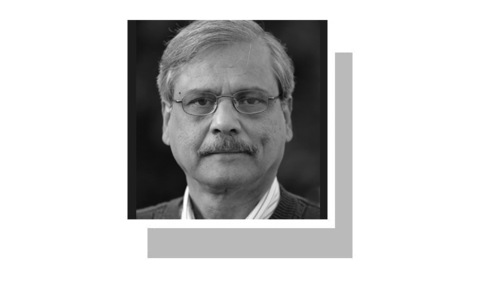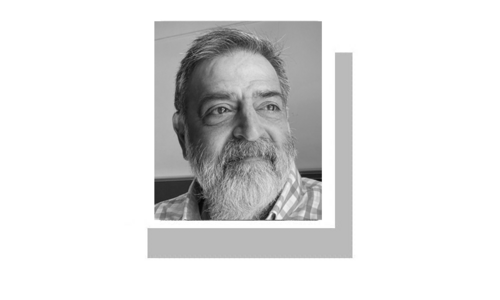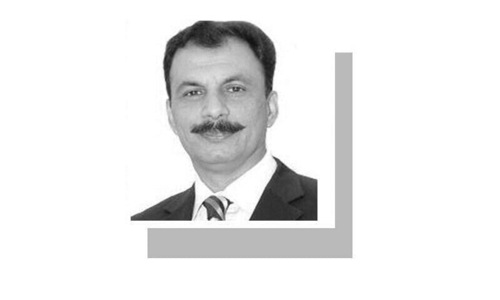
"A mob of over 1,000 men, on a destructive rampage, forcibly entered our hostel and destroyed every piece of property in sight. They thrashed any international student they could find. Scared for their lives, some of us hid in the washroom.”
This is the horrific eye-witness account of a Pakistani student in Bishkek, Kyrgyzstan, where a disinformation campaign placed foreign students in mortal danger. This included thousands of Pakistani students.
To make matters worse, another online disinformation campaign started during this riot, with claims that some Pakistani students had been murdered.
Imagine the terror experienced by those stranded in Bishkek and their families back home, unaware of the fate of their loved ones. While the crisis is now over, with thousands of students hurriedly flying back home, it illustrated the beastly nature of such disinformation campaigns.
In this digital age, it is very hard to escape misleading information and fake news, but can we get better at spotting and stopping it?
Such false narratives tend to pick up during periods of frenetic activity, such as a national election. During this year’s elections in Pakistan, numerous such campaigns found traction online, ranging from attempts to tarnish candidates’ public image to shaking people’s belief in the electoral process itself.
One such video that went viral was of politician Mian Javed Latif of the Pakistan Muslim League-Nawaz (PML-N). The video, which quickly gained virality, showed him fleeing on a motorcycle to escape a mob.
The accompanying caption claimed that the PML-N politician had angered prospective voters with his behaviour to such an extent, that they had chased and attacked him, forcing him to flee the constituency in the middle of an election campaign. In reality, the video was seven years old.
Meanwhile, on the eve of the election results, a fabricated graphic, showing an overwhelming victory for a particular party, went viral on social media. This false information created confusion and unrest among the people and hurt the sanctity of the electoral process itself.
The situation seems to be worse in India, where voting finished in a marathon election stretched over six weeks.
A US-based organisation that researches hate speech and disinformation said it had “witnessed an unprecedented scale of disinformation” in the elections.
Moreover, research conducted by The London Story, an Indian diaspora group, and another organisation, India Civil Watch International, found that Meta allowed political advertisements and posts that contained anti-Muslim hate speech, Hindu nationalist narratives and misogynistic posts about female candidates, as well as ads encouraging violence against political opponents.
The ads were seen more than 65 million times over 90 days earlier this year. Together, they cost more than $1 million.
India has also served as the base from which digital disinformation has been used as a weapon against rival countries. In 2020, an online operation conducted by the EU Disinfo Lab unearthed a 15-year-long disinformation campaign perpetrated by India against Pakistan.
This venture, led by a Delhi-based business entity called the Srivastava Group, created and amplified misleading content against Pakistan by targeting the United Nations and the European Union, and resurrected defunct NGOs and created fake media outlets to spread disinformation.
The consequences of such elaborate campaigns are far-reaching. Such disinformation undermines public trust in democratic processes, polarises communities and can even incite violence.
In the context of mainstream news media, it erodes the public’s trust in legitimate news sources, creating a vicious cycle, where citizens become increasingly sceptical of all information.
This erosion of trust became particularly evident during the Covid outbreak, with one theory claiming that the pandemic was part of an elaborate scheme by Microsoft founder Bill Gates to insert “trackable chips” into human beings. What may seem like a ludicrous claim to some was, alarmingly, believed by 28 percent of Americans, according to a YouGov poll.
Such viral rumours, especially in the midst of a global health crisis, can have deadly consequences, as they undermine public health measures and fuel misinformation.
According to a recent report by Reuters, a large number of fake accounts are running on X (formerly Twitter) ahead of the US elections, and at least 15 percent of the more than 94,000 accounts promoting pro-Trump propaganda are fake. The message from this swarm of bots? “Biden is the worst president in history” and “Vote for Trump.”
Societies with a fragile social fabric, or one that is at a crossroads, navigating multiple fault lines, are more susceptible to such disinformation campaigns.
We saw it in Pakistan in 2022, when a military helicopter crashed in Balochistan, killing the six officers on board. They included a regional corps commander, a major general and one brigadier. This national tragedy was followed by a barrage of misleading information, with one theory suggesting foul play, which stunned even the most cynical of minds. By the time the state asserted its narrative, the damage had already been done: political divisions had been amplified.
Even though such information can be easily verified, most of us are unlikely to take out two minutes to do that. We will, however, spend hours circulating the same information among our contacts. It is not difficult to rectify that. Several online services, such as ‘Google Factcheck’ and the ‘Poynter Institute Factcheck’, have created news hubs, where viral content is checked against evidence.
Mainstream newsrooms are also putting up a fight against online disinformation — Pakistan saw several such factcheck departments and entities pop up ahead of the general elections in February this year — but the actual power to stop the flow of disinformation lies with those who consume this content.
The problem is that when the state makes the decision to curb disinformation, it often results in blanket bans — not unlike the one on X right now — or draconian laws, such as the recent defamation act passed in Punjab. Hence it is the average surfer of the world wide web who needs to be more aware of their virtual environment.
An informed approach to verifying content could involve the process of ‘reverse video search’, where you paste a screenshot from the video in question into a ‘reverse image search’ engine, such as Google’s, and watch and see the reality unfold.
For those who find it cumbersome, there are easier, more convenient filters and tools. Here are a few that I have found handy:
Train Your Eye
The first step in combatting online disinformation is to educate yourself with the basic techniques to verify information. Your eye is the first line of defence, because if it is too good to be true, chances are it probably is!
Verify the Source
Make a habit of reading news stories only via credible news organisations’ social media accounts and double check the source of anything that looks shady to your eye.
Verify the Content
This is the easiest bit that one can do. Read the story yourself two to three times, and if you can identify grammatical errors in the story, chances are that it is not from an authentic newspaper or website.
Analyse the Content
Copy the claims made in the story and paste it into Google and hit enter. The results will help you understand if the claim is true or false.
Use a Digital Tool
There are simple extensions and tools that can be installed in your browser. I use ‘NewsGuard’ for Chrome. It is a ratings-based extension that lists news websites according to their reliability and trustworthiness. A green label next to a web address shows that the site can be trusted, but a red label or even the absence of a label shows that it might be better not to proceed with a ‘click’.
Engage Responsibly
Avoid sharing any unverified information or content, regardless of how harmless it appears to you.
The stakes are high, but with concentrated action, we can counter the insidious spread of disinformation and safeguard the truth, at least in our digital spaces.
The future of our democracy and social cohesion depends on our ability to rise to this challenge and remain ever-vigilant against the threats posed by fake news.
The writer is a broadcast journalist.
X: @SherazKRajput
Published in Dawn, EOS, June 9th, 2024














































Dear visitor, the comments section is undergoing an overhaul and will return soon.